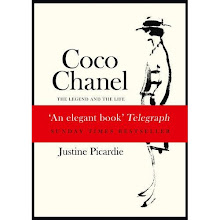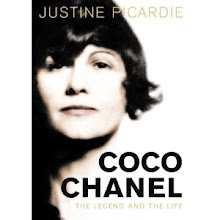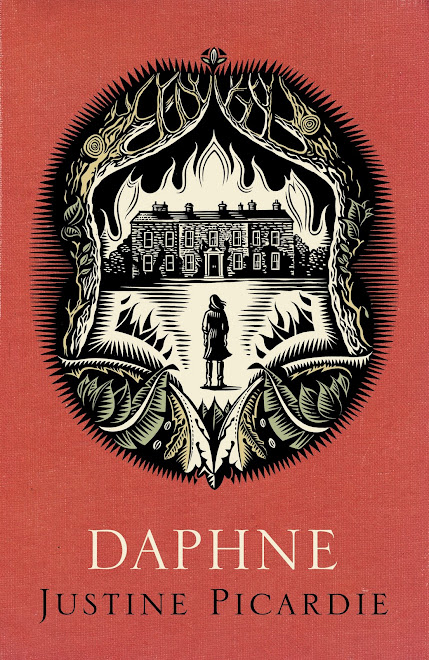


Apologies for the length of this post, but I can't link to the piece about E.Nesbit that I wrote for last Sunday's edition of the Telegraph, and I know from past comments that some readers of this blog are Nesbit fans. She is one of my favourite authors, and I have still have my battered Puffin paperback editions of her novels that my mother gave to me many, many years ago. I've been longing to write about her for ages, so here is the end result. By the way, there's an excellent biography of Nesbit by Julia Briggs ('A Woman of Passion'), which covers far more than I could ever do in the following article....
Christmas and E. Nesbit have always gone together for as long as I can remember – and long before that, for many of her stories were originally published at this time of year, some of them in a long-forgotten children’s magazine called Father Christmas. My first taste of them was as Puffin paperbacks that appeared in my stocking as a little girl, and I was equally entranced by the film adaptation of Nesbit’s most famous story, ‘The Railway Children’, during the Christmas holidays of 1970. Like the rest of the audience, I wept as Bobbie, played by Jenny Agutter, was reunited with her father at last – ‘Oh! My Daddy, my Daddy!’ -- and I get weepy whenever I see the film again (an annual event, given that it has become a Christmas classic).
Edith Nesbit’s novels celebrate a golden age of Edwardian childhood, an idyllic vision of family life where mishaps and squabbles are swept away by glorious adventures or magical interventions, but the writer’s own life was far darker and more complicated. (A similar discrepancy between fantasy and reality is apparent for many families at Christmas, which might explain why her work remains so powerfully resonant at this time of year). She was born 150 years ago, in 1858, yet her marriage to Hubert Bland, with whom she became one of the founding members of the Fabian Society, was far from a Victorian ideal of propriety. Her friend George Bernard Shaw observed, ‘Edith was an audaciously unconventional lady and Hubert an exceedingly unfaithful husband’; which was already evident on their wedding day in 1880, when she was seven months pregnant with their first child, and he had a mistress elsewhere.
As a child, I wasn’t sure if E. Nesbit was a woman or a man – the authorial voice of her books is too teasing and mercurial to be easily identifiable – but what was always clear was her memory of the agonies and ecstasies of youth. Sharpest of all was her sense that love and grief are entwined; for long before she suffered the miseries of an absent or erring husband, she knew the painful loss of a father; though he was never to be restored to her, unlike in “The Railway Children”.
The youngest of five siblings, she was not quite four years old when her father died; according to her biographer, Julia Briggs, “Edith remembered her earliest childhood as an Eden before the fall and the coming of death.” Her Arcadia was Kennington, now the most urban of south London locations; but in those days, the redbrick terraces of an expanding city had not yet engulfed the greenery, and Edith’s father ran an agricultural college with three acres of land. “It had a big garden and a meadow and a cottage and a laundry,” wrote Nesbit in a later memoir, “stables and cow-house and pigsties, elm-trees and vines, tiger lilies and flags in the garden, and chrysanthemums that smelt like earth and hyacinths that smelt like heaven.”
After her father’s death, her elder sister Mary became consumptive, and Edith was sent to a dizzying sequence of boarding schools, while her mother embarked on an unsuccessful search for a healthier climate for her ailing daughter. Edith sometimes joined them as they travelled across the Continent; but when Mary died, the family settled in the Kent countryside, in a house with a railway line that ran at the bottom of the field beyond their garden; all in all a blissful place for children to explore.
Mrs Nesbit ran into financial difficulties, towards the end of 1875, and was forced to uproot and rent lodgings in north London. But it was to Halstead, the Kent village where the family had been so happy, that Edith took Hubert Bland when she fell in love with him. She was just 19, he was three years older, and their time there, she wrote in a letter soon afterwards, was “the most charming day I have ever spent. The country was fresh, young and jolly. So were we…” Hubert, a handsome bank clerk, conveniently omitted to tell Edith that he already had a lover, Maggie Doran, his mother’s paid companion, who was to give birth to his son soon afterwards, and with whom he continued to have an affair for several more years.
This did not prevent him seducing Edith, and even after they were married in April 1880, two months before the birth of their son Paul, Hubert regularly spent nights away from their marital home. When Paul was still a baby, Hubert caught smallpox – one of thousands to do so as an epidemic spread across London that summer – and returned to his mother’s house (where Maggie Doran was still living) to be nursed. Edith was left without any income at all, and started writing poetry and short stories for various magazines, much as Mother is forced to do in ‘The Railway Children’: “Mother, all this time, was very busy with her writing. She used to send off a good many long blue envelopes with stories in them – and large envelopes of different sizes and colours used to come to her. Sometimes she would sigh when she opened them and say: ‘Another story come home to roost. O dear, O dear!’ and then the children would be very sorry. But sometimes she would wave the envelope in the air and say: ‘Hooray, hooray. Here’s a sensible Editor...’ Whenever an Editor was sensible, there were buns for tea.”
‘The Railway Children’ reflects its author’s life in other ways, for both concealed a scandal at the heart of the family. Like her creator, Mother insists on keeping a secret from her children – in this case, that their father has disappeared because he is in prison, charged with being a traitor and a spy – and when Bobbie discovers a report of his trial on a sheet of old newspaper, the need for secrecy is reinforced. “‘We won’t talk of all this any more, will we, dear?’ said Mother; ‘we must bear it and be brave. And darling, try not to think of it.’”
Bobbie takes matters into her own hands, and writes a letter to the kindly Old Gentleman who has already helped the Railway Children reunite a maltreated Russian émigré with his wife and children; the nameless Old Gentleman (who has something of Father Christmas about him) works his magic again, and the lost father is released from wrongful imprisonment and returned to his family.
Edith, however, had no such benevolent benefactor to act on her behalf, and just as her father was never restored to her in childhood, neither was her husband ever to become a loyal partner. (As for the Russian refugee, a writer friend named Sergei Stepniak who she fictionalised in ‘The Railway Children’: in reality, he was killed while walking on a train track).
After the relationship with Maggie Doran petered out, Hubert began an affair with Edith’s closest friend, Alice Hoatson, and eventually lived with both of them in an extraordinary ménage a trois. The two women had met in 1882, soon after Edith had given birth to another baby – a daughter named Iris – and was still struggling to support the household, though Hubert was back in residence again, and embarking on a writing career himself. Alice joined the Blands as a member of the Fabian Society; and the year after the birth of Edith’s third child (a son named Fabian), Alice moved in with the family, and subsequently had a baby daughter of her own, Rosamund, in 1886. At this point, Edith appears not to have realised that her husband had fathered her best friend’s child; in fact, she helped Alice disguise the pregnancy from the outside world, to save her from the disgrace of being recognised as an unmarried mother. This bizarre situation was made more fraught by the fact that Alice’s child was born a few months after Edith had gone through a fourth pregnancy in which the baby died at birth; but the terrible distress of both women was covered with a veil of secrecy.
Nevertheless, appearances were kept up: for Edith adopted Alice’s baby – still not knowing the father’s identity – and when Alice gave birth to another child, John, in 1889, the same procedure was followed (tragically, Edith was again suffering the loss of her own baby, still-born during Alice’s second pregnancy). By now, Edith had discovered the truth of Alice and Hubert’s love affair, and yet despite many stormy scenes, the three of them continued to share a house with their five children, who referred to Alice as ‘auntie’. Many years later, Rosamund was asked by Nesbit’s first biographer to explain how her father had managed to persuade both Edith and Alice to accept this deeply uncomfortable arrangement. “Make no mistake about it,” she wrote in a letter of reply, “he was absolutely irresistible to the women he paid court to, not only before the event of capture, but after. He had a tremendous hold on anyone he had ever possessed. And why? … He endowed every affair with the romance of his own imagination… Chiefly through fantasy, perhaps, but what more powerful factor is there in a woman’s life, and certainly at that period, than that of fantasy?”
If fantasy was at the heart of Edith’s marriage, then it was also a means of paying the bills. Her output included some chilling ghost stories – many of them tales of cruel or unfaithful men – but her career as a writer only took off (quite literally) when she started writing children’s tales that included episodes of flying. Yet the ability to fly in her stories is never entirely straightforward – the magic carpet in ‘The Phoenix and the Carpet’ has a hole in it; the angel wings that are granted as a wish to the protagonists of ‘Five Children and It’ disappear at sunset, leaving them stranded on top of a church tower. Perhaps Nesbit longed to escape from her brood of children and her husband and his mistress; but flight seems never to have been an option, except in her stories, and even then, reality tends to intrude with bumpy landings (which is part of the charm of her writing, with its intermingling of magic into ordinary everyday narratives).
Even the briefest account of Edith Nesbit reveals that her own life was stranger than her fiction – wilder, more disorderly and shadowed by tragedy – yet she continued to write stories that ended happily ever after, however unhappy her circumstances. One can understand why Jenny Agutter – who was cast as Mother in a more recent version of “The Railway Children” – is planning to make a film of Nesbit’s life, setting it in Well Hall, a ramshackle mansion in Eltham that the Bland family moved into in 1899. “It was very grand, but a complete ruin,” says Agutter, “and the main staircase collapsed to the ground. Can you imagine how nightmarish it must have been for Edith and Alice to live there together – and yet they nursed each other through illnesses, cared for one another, and were bound together by Hubert.”
However powerful his hold on the women, Hubert was undoubtedly far more inadequate than the beloved Father of “The Railway Children”; but there was also a significant gap between the perfect Mother of that story and the imperfect mother who wrote it. By then, Nesbit had lost her son, Fabian, who died at the age of 15 in 1900, after never waking up from the anaesthetic he had been given for a routine operation to remove his tonsils. The procedure had taken place at home, and when the doctor arrived in the morning, Edith was still sleeping. She had forgotten to remind her son not to eat before the tonsillectomy, and bitterly reproached herself for his death.
She died of lung cancer in 1924, ten years after the death of her husband. Alice survived both of them, but as Julia Briggs notes in ‘A Woman of Passion’, “She was to live out a poverty-stricken old age in south London, maintaining the sad pretence that Rosamund and John were her niece and nephew.” Even sadder was the fate of Paul Bland, Nesbit’s oldest son, and the boy to whom she dedicated “The Railway Children”: after a period of black depression, he killed himself in 1940.
Just as she had painted an idealised version of herself as Mother in ‘The Railway Children’, so Nesbit fictionalised her son Paul as a resilient ten-year-old Peter. Towards the end of the story, she has him saying, “wouldn’t it be jolly if we all were in a book and you were writing it? Then you could make all sorts of jolly things happen… and make Daddy come home soon.”
Mother’s answer is a model of piety: ‘Don’t you think it’s rather nice to think that we’re in a book that God’s writing? If I were writing a book, I might make mistakes. But God knows how to make the story end just right – in the way that’s best for us.’ But when her son questions if she really believes this, she falters a little: ‘I do believe it – almost always – except when I’m so sad that I can’t believe anything. But even when I can’t believe it, I know it’s true – and I try to believe it. You don’t know how I try…’











































